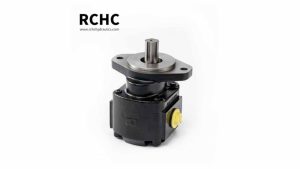Cómo limpiar las válvulas hidráulicas
Cleaning hydraulic valves is essential for maintaining the efficiency and longevity of a hydraulic system. Here’s a step-by-step guide to help you clean hydraulic valves safely and effectively:
Tools and Materials Needed:
- Clean, lint-free cloths
- Soft brush (e.g., a nylon brush)
- Solvent or hydraulic fluid cleaner (recommended by the manufacturer)
- Compressed air (optional)
- Protective gloves and safety glasses
- A clean workbench or area
Step-by-Step Cleaning Process:
- Safety First:
- Depressurize the System: Before disassembling any part of the hydraulic system, ensure it is completely depressurized.
- Wear Protective Gear: Use gloves and safety glasses to protect yourself from any hazardous materials or fluid exposure.
- Remove the Valve:
- Carefully remove the hydraulic valve from the system following the manufacturer’s guidelines. Keep track of all parts during disassembly.
- Initial Inspection:
- Inspect the valve for any visible signs of wear, corrosion, or damage. This can help identify if the valve needs more than just cleaning.
- Disassemble the Valve:
- If the valve is a complex assembly, carefully disassemble it. Note how each component fits together, and lay them out in order. This will help with reassembly.
- Clean the Components:
- Wipe Down: Use a clean, lint-free cloth to wipe off any loose dirt or debris from the valve components.
- Brush and Solvent: Apply a small amount of the recommended solvent or hydraulic fluid cleaner to the soft brush. Gently scrub the valve components, paying particular attention to the orifices, ports, and spool. Ensure that all dirt, grime, and deposits are removed.
- Rinse and Wipe: After scrubbing, rinse the components with clean solvent if necessary and wipe them down with a clean cloth.
- Use Compressed Air (Optional):
- If available, use compressed air to blow out any remaining debris or solvent from small orifices and passages. Ensure the air pressure is low enough not to damage the valve components.
- Dry and Inspect:
- Allow all components to dry thoroughly. Inspect them again for any signs of wear or damage that might require replacement.
- Reassemble the Valve:
- Carefully reassemble the valve, ensuring all components are clean and properly aligned. Refer to your notes or the manufacturer’s guide for the correct order and orientation of parts.
- Reinstall the Valve:
- Once the valve is clean and reassembled, reinstall it in the hydraulic system according to the manufacturer’s instructions.
- Test the System:
- After reinstallation, gradually pressurize the system and check for any leaks or issues. Monitor the valve’s performance to ensure it operates correctly.
Tips:
- Use Manufacturer-Approved Cleaners: Always use solvents or cleaners recommended by the valve manufacturer to avoid damaging seals or other components.
- Regular Maintenance: Regular cleaning and inspection can prevent major failures and extend the life of hydraulic valves.
- Handle with Care: Hydraulic valve components are often precise and sensitive. Handle them carefully to avoid damage.
By following these steps, you can effectively clean your hydraulic valves and ensure they continue to operate efficiently.
 Bomba hidráulica fabricante de productos | Rui Chen Hydraulic Machinery Co. Ltd
Bomba hidráulica fabricante de productos | Rui Chen Hydraulic Machinery Co. Ltd





HolaConéctese